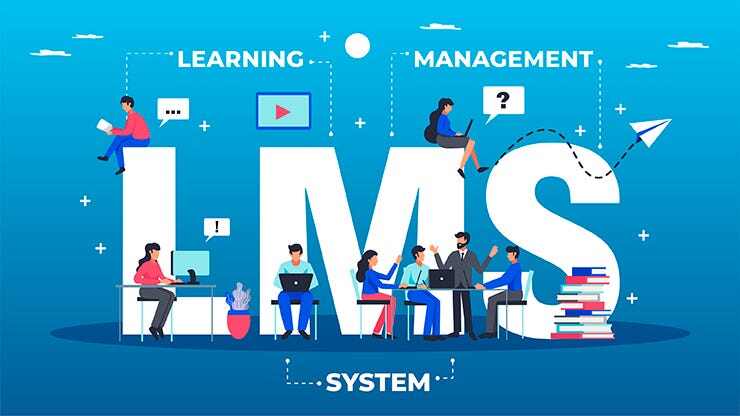How to Implement a Tech Help Desk for Teachers & Students
The article discusses the importance of setting up a tech help desk in educational institutions to support teachers and students in effectively using...
4 min read
 Aria - LATechNet Team
:
Mar 30, 2025 6:06:07 AM
Aria - LATechNet Team
:
Mar 30, 2025 6:06:07 AM

In today's rapidly changing digital landscape, having a robust and future-proof IT infrastructure is critical for K-12 schools. Just think about how quickly classrooms have shifted from chalkboards to smartboards, and from textbooks to tablets! As educators, we understand firsthand how quickly the technological needs in education evolve—often faster than budgets or resources can keep up.
Schools today face numerous challenges, from protecting sensitive student information against rising cybersecurity threats, to navigating tight budgets and limited resources. Meanwhile, new technologies keep emerging, promising exciting opportunities but also creating additional pressure to adapt quickly. Building a solid IT foundation isn't just about today's solutions; it's about ensuring your school stays ready and resilient, no matter what tech innovations tomorrow brings. Let's explore how we can make this happen together.
As educators, we know firsthand how fast technology moves. Just a few years ago, tools like artificial intelligence, cloud computing, machine learning, and the Internet of Things (IoT) were considered futuristic. Today, they're becoming common in many K-12 classrooms. To effectively harness these powerful educational technologies, schools need infrastructure that can support increased bandwidth and low latency communications. Without a future-proof network capable of handling these demands, students and teachers may struggle with slow connections and frustrating interruptions, limiting the benefits these technologies can offer (edtechmagazine.com).
Another critical reason to future-proof school IT infrastructure is cybersecurity. School districts often handle sensitive information, making them prime targets for cyberattacks. K-12 IT leaders agree that cybersecurity is their number one priority (cosn.org). Proactive security measures are essential to protect educational data from threats like ransomware, phishing, and data breaches. Unfortunately, schools sometimes underestimate the risks they face, highlighting the need for greater awareness and preparedness in securing their tech environments.
Many K-12 schools today find themselves struggling with outdated technology and infrastructure gaps. In fact, over 90% of schools report they urgently need technological improvements to keep pace with modern educational demands (ppic.org). One significant challenge educators face is setting up high-density wireless networks—these are essential as more students rely on digital learning tools. Unfortunately, outdated hardware, spotty Wi-Fi coverage, and networks that simply can't handle current demands slow down learning and frustrate both teachers and students alike.
Adding to these technical headaches, schools often deal with tight budgets and limited resources. The Cybersecurity and Infrastructure Security Agency (CISA) reports that K-12 institutions frequently lack the financial and human resources necessary for strong technology infrastructure and cybersecurity. To cope, CISA suggests exploring free or affordable cybersecurity solutions tailored specifically to schools (cisa.gov).
Protecting student data and digital resources should be a top priority for every school. To achieve this, schools can adopt comprehensive cybersecurity frameworks and policies. A layered defense strategy can help effectively protect sensitive information by combining firewalls, endpoint protection, and ongoing user training. Educators and IT staff can leverage free or affordable cybersecurity resources recommended by the Cybersecurity and Infrastructure Security Agency (CISA), specifically tailored for K-12 environments, to strengthen their defenses without straining budgets.
Technology changes quickly, and the infrastructure schools build today should be adaptable for tomorrow. Investing in scalable networks that are reliable and easy to maintain helps schools handle growth smoothly. Cloud services and virtualization technologies can simplify infrastructure management and cut down costs, making it easier for IT teams to adapt quickly to new educational technologies or unexpected demands.
Schools don't have to face IT challenges alone—collaboration can greatly enhance cybersecurity and IT effectiveness. Joining groups like MS-ISAC and K12 SIX encourages resource sharing, awareness, and collective problem-solving. It’s also beneficial for schools to establish clear communication channels internally and externally. Regular communication ensures timely responses to IT issues, fosters teamwork, and helps create a community of shared knowledge, ultimately making everyone's job easier and more effective.
Building a future-proof IT infrastructure isn't a one-time task—it’s an ongoing journey. First, take the time to regularly assess and audit your current infrastructure. Think of this as a health check-up that helps spot issues before they become big problems. Next, lay out a clear, strategic roadmap with defined milestones. This roadmap is like your GPS, guiding your school from where you are now to where you want to be.
Don't forget your staff along the way! Regularly updating their skills through engaging professional development sessions on technology and cybersecurity ensures everyone can confidently use new tools. Lastly, establish feedback loops that bring IT professionals and educators together. These conversations can uncover valuable insights and help you adjust your plans in real-time. By working together, your school can smoothly navigate the path toward a robust and resilient IT future.
LATechNet specializes in modernizing IT infrastructures specifically for K-12 schools, understanding the unique challenges educators face. With their deep expertise, they offer comprehensive cybersecurity services—from threat assessments to managing security risks—so schools can confidently protect sensitive student data and administrative information. LATechNet also provides cost-effective solutions by tapping into cloud computing, scalable networking, and reliable wireless systems, helping schools stretch their budgets further without compromising quality. Beyond technology itself, LATechNet emphasizes ongoing support, training, and consulting services, empowering educators and staff to continuously adapt and smoothly adopt new technologies. Their collaborative, friendly approach means working side-by-side with school staff to pinpoint unique challenges and opportunities, crafting customized strategies that evolve alongside emerging educational technologies, ensuring schools remain future-proof for generations to come.
Building a future-proof IT infrastructure is essential for K-12 schools aiming to provide meaningful, secure, and relevant learning experiences. By proactively planning ahead, schools can stay flexible and adapt quickly to new technologies, ensuring their students and teachers always have the tools they need. Collaboration among educators, IT experts, and administrative leaders is also key—together, they can navigate the ever-changing tech landscape with confidence.
It's important to remember that schools don't have to tackle this journey alone. Working closely with experienced IT partners, such as LATechNet, can ease the transition and help schools avoid common pitfalls. These partnerships offer guidance, reliable support, and the expertise needed to implement sustainable and secure technology solutions. In the end, investing thoughtfully in IT infrastructure today empowers schools to confidently embrace tomorrow's educational opportunities.
The article discusses the importance of setting up a tech help desk in educational institutions to support teachers and students in effectively using...

The integration of Chromebooks into classrooms has significantly transformed educational environments, offering affordable and accessible digital...

Learning Management Systems (LMS) have become essential in K-12 education, especially post-pandemic, providing seamless digital learning experiences....